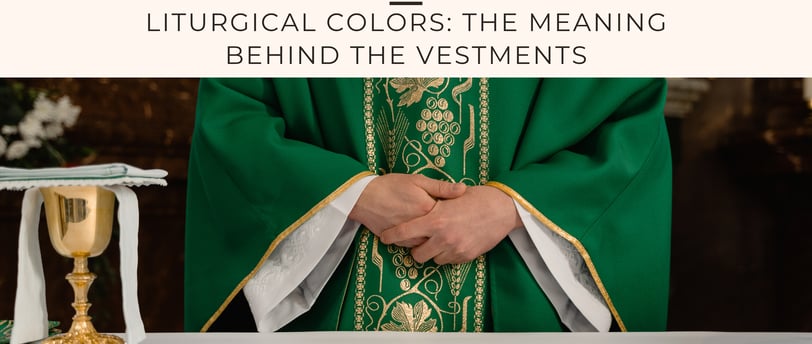Liturgical Colors: The Meaning Behind the Vestments
Explanation on the Liturgical colors, when they are used and why
SIGNIFICANCE
6/19/20252 min read


When you attend Mass or observe a Catholic liturgy, you may notice that the priest’s vestments change in color throughout the year. These liturgical colors are far from decorative—they serve as powerful visual symbols, helping the faithful enter more deeply into the mystery of the liturgical season or feast being celebrated.
Each color used in the liturgy has a specific theological meaning, drawing our hearts and minds into the rhythm of the Church’s prayer.
White: Joy, Purity, and Resurrection
White is the color of celebration. It signifies purity, joy, and the glory of the Resurrection. It is used during:
Christmas and Easter seasons
Feasts of the Lord (except those related to His Passion)
Feasts of the Blessed Virgin Mary, angels, and saints who were not martyrs
Weddings and baptisms
Funerals (symbolizing hope in the resurrection)
“I am the resurrection and the life; whoever believes in me, even if he dies, will live” (John 11:25).
Red: The Color of Blood and Fire
Red represents the blood of martyrdom and the fire of the Holy Spirit. It is used on:
Palm Sunday
Good Friday
Pentecost
Feasts of the Apostles and martyrs
It recalls both the Passion of Christ and the tongues of fire that came upon the Apostles at Pentecost (Acts 2:3).
Green: Hope and Life
Green is the color of Ordinary Time, symbolizing hope, growth, and life. It reminds us that even outside major feasts, we are always called to grow in grace and holiness
“They that hope in the Lord will renew their strength” (Isaiah 40:31).
Purple (Violet): Penance and Preparation
Purple, or violet, is the color of penance, preparation, and mourning. It is used during:
Advent
Lent
In Advent, it expresses a spirit of expectant preparation. In Lent, it symbolizes repentance and the journey toward conversion.
Some churches may use rose (a soft pink) on the third Sunday of Advent (Gaudete Sunday) and the fourth Sunday of Lent (Laetare Sunday) as a sign of joyful anticipation amid penitential seasons.
Black (Optional): Mourning and Death
Black is traditionally associated with mourning and was once common for funerals and All Souls’ Day. Though rarely used today (often replaced with white or violet), it remains a powerful symbol of solemn reflection on death and the need for prayer for the dead.
“It is a holy and wholesome thought to pray for the dead” (2 Maccabees 12:46).
Gold and Silver: Festive Alternatives
Gold or silver may be used on the most solemn feasts—such as Christmas and Easter—as substitutes for white. These metallic hues highlight the glory and majesty of the occasion.
Colors That Teach and Inspire
The Church’s use of liturgical colors is not arbitrary; it is deeply rooted in tradition and theology. These colors form a sacred tapestry that leads us through the mysteries of Christ’s life and the history of salvation. They help us pray not only with words, but with our senses.
Faith
Sharing God's grace with joy and kindness.
Grace
© 2025. All rights reserved.
